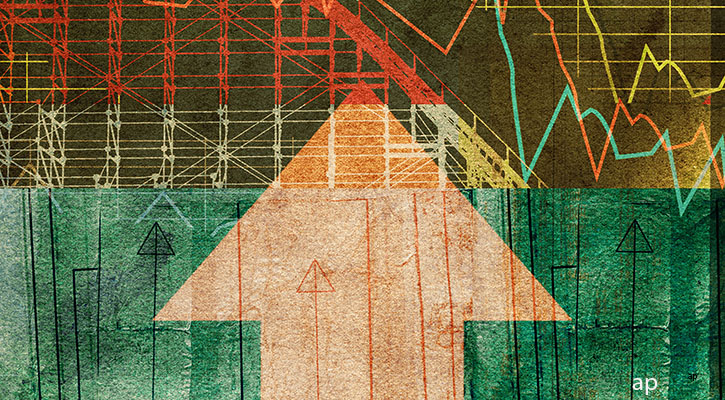Ruth Saldanha: We've talked a lot about blank check companies or special purpose acquisition vehicles, also called SPACs for short. 2021 was a record year for SPAC formation. They made up almost half of all IPOs for the year. To-date, in 2022. SPACs have taken an even larger share of the IPO market at 74% of total IPO proceeds, coming in at nearly $10 billion. However, this money hasn't really gone to retail investors. We've said in the past that a lot of people make money on SPACs, but it's very rarely the individual investor. Now, new research from DBRS Morningstar shows that this is indeed the case, with banks making the money, even as investors in many cases are left holding duds. One of the authors of the report, Cheryl Saldanha, who is an Assistant Vice President of Credit Ratings at DBRS Morningstar is here today to talk about some of the key findings of the report. Cheryl, thank you so much for being here today.
Cheryl Saldanha: Thanks for having me, Ruth.
Ruth Saldanha: First up, let's talk about these banks. How are they making so much money on the SPACs?
Cheryl Saldanha: So, yeah, what we've seen is that the banks appear to be the big money maker with the SPAC boom. And so, this happens because there's so many different layers of fees that they can earn throughout the lifecycle of a SPAC. So, usually, they can earn an initial underwriting fee for the SPAC IPO. Then there's usually a remaining underwriting fee once the SPAC has found its acquisition target. They can also earn advisory fees for pitching potential acquisition candidates to the SPAC and then later on, if they need to arrange any additional financing to close out the acquisition in the event that those initial IPO proceeds weren't enough, they can earn a fee for arranging that as well. And so, the typical lifecycle of a SPAC is usually two years, and in 2021, we saw over 700 SPACs being created. So, I think over the next one to two years what we're going to see is that the banks are going to be raking in all these fees as these SPACs mature in their lifecycles. And so, this is also assuming that each SPAC is able to find and close out their acquisition.
Ruth Saldanha: So, where does that leave the individual investor? What has your research found in terms of how much money they've been making or what happens to them?
Cheryl Saldanha: So, it seems that individual investors aren't always realizing the yield that they were searching for. And so, what we've noticed with SPACs is that in order to attract investors, they're able to market their future projections or their future potential even if they haven't earned a profit yet. And so, what we're seeing now is that many of these companies are missing the bullish projections that they use to attract investors. And so, many of these investors are just not seeing that profit or the yield that they were hoping for. And there's been a couple of cases too where a company has misrepresented itself or its capabilities to investors, and this is actually resulted in charges or fines from the U.S. Securities and Exchange Commission.
Ruth Saldanha: That brings me to my next question about regulations. What are the regulators doing about it? Your research has found that there are more regulations coming.
Cheryl Saldanha: So, it does seem like there is more regulation coming and the SEC in particular is looking to focus on three main areas. So, the first is the difference in disclosure requirements between traditional IPOs and SPACs. So, traditional IPOs, they require far more disclosures. There's much more requirements for them. And currently, with SPACs there can actually be conflicts of interest between the SPAC sponsor and investors, or they're going to even be information asymmetries between different investors within the same SPAC. And so, these are currently not required to be disclosed to investors.
The second relates to marketing practices for SPACs. So, currently, they're allowed to generate hype with investors using flashy marketing materials or having celebrities involved. And so, this is something that's also not allowed with normal IPOs. And then, the final thing relates to the use of financial projections. So, again, one of the main attractions of SPACs is that they're able to market their future prospects to investors, even if they haven't earned a profit. And currently, SPAC sponsors are immune from civil litigation if they were to make misleading statements about the forward-looking view of the company, or if they conduct an adequate due diligence on behalf of investors. And so, I think the SEC is looking to put in more protections for investors of SPACs.
Ruth Saldanha: So, if the SEC actually goes ahead and makes these recommendations where a lot of these benefits are taken away, does that mean that SPACs become more or less similar to traditional IPOs, and in which case, do you think we might see fewer SPAC listings?
Cheryl Saldanha: I definitely think that regulation will have the potential to reduce the number of SPAC listings that we're seeing. The current lack of regulation makes SPACs the more attractive option to take a company public compared to traditional IPO because you have less restrictions, there's less disclosure requirements. And then, on top of that, SPACs can actually be more expensive than a traditional IPO because of all of these layers of fees. So, you have your initial underwriting fee, there's a subsequent underwriting fee, you pay advisory fees to the bank as well for pitching clients, and then on top of that, there's other fees that can be earned for arranging additional financing. And so, if you take away these benefits by adding more regulation, you've now eliminated this attractive shortcut, so to speak, for taking a company public and what you're left with is the choice between the traditional IPO and a SPAC, which actually is the more expensive option.
Ruth Saldanha: Great. Thank you so much for joining us with your perspective, Cheryl.
Cheryl Saldanha: Thank you so much.
Ruth Saldanha: For Morningstar, I'm Ruth Saldanha.




















